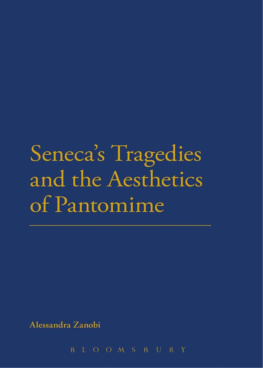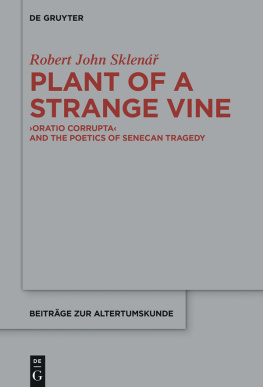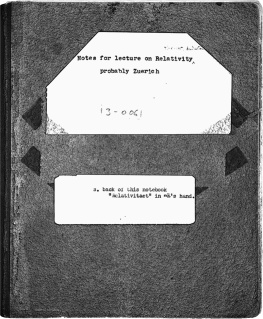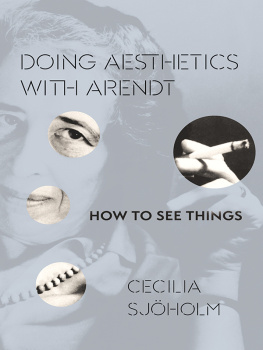That Senecas tragedies exhibit numerous features that set them apart from the theatrical conventions of fifth-century Greek tragedy and do not conform to the classical model, as defined for this genre by Aristotle, developed by Hellenistic critics, and accepted in Rome by Horace, is a fact well observed by most Senecan scholars;
A major problem in the interpretation of the controversial features of Senecas tragedies is due to the total loss of complete tragic play texts between Euripides and Seneca; in fact, since no complete tragedy survives from the Hellenistic, Republican, or Augustan period, the fifth-century Greek plays are necessarily the only extant models available with which Senecan tragedies can be compared. A direct comparison shows that Senecas tragedy deviates in many ways from the dramatic technique of fifth-century Greek tragedy and that some Senecan scenes would be difficult or even impossible to stage within classical Greek conventions. If this is certainly true, it must be also observed that, since theatrical conventions underwent noticeable changes in the long span of time intervening between Euripides and Seneca, the comparison between fifth-century Greek tragedies and those of Seneca lacks a methodological basis and cannot be considered as absolutely reliable to postulate definitive conclusions.
The solution of this methodological problem has been rightly perceived by Senecan scholars as fundamental to the achievement of a better and fuller
Senecas adoption of different theatrical genres then would be in keeping with the attested contemporary practice of the Roman stage to combine different types of theatrical shows.
The presence of pantomimic elements in Senecas tragedies may in part due to his attempt to make them suitable to the taste of his audience. Senecas sensitivity to and awareness of the taste of his contemporaries is consistent with Tacitus description, which portrays him as a man endowed with a brilliant mind well suited to the taste of his age (Annales 13, 3: fuit illi viro ingenium amoenum et temporis eius auribus accommodatum).
But there are two additional reasons, arguably more interesting, for Senecas interest in the techniques and aesthetics of pantomime. First of all, this theatrical medium, which expressed its art through movements and gestures, was the most suitable one, thanks to its effectiveness in expressing many different affectus, to display the effects of passions, whose treatment has a central place both in Senecas tragic and philosophical works. In Senecas philosophical view, individual identity is control over instinct and passion. The loss of control turns a person into one of a series of possible stereotyped masks of an archetypical behaviour. Although philosophically and morally unacceptable, the consequence of the loss of control can, however, be spectacular and worthy of artistic representation. Pantomime with its instances of stylization is the art most suited for representing extreme mental states associated with the tragic loss of control.
Second, experimental attitude and freedom in the handling of the models, which are, more generally, typical features of post-classical Roman writers, are two important and well-recognized Senecan characteristics. In this regard, Boyles statement about Senecas interest in dramatic experimentation even perhaps innovation as well as his definition of Senecan tragedy as formally diverse tragedy are particularly relevant.
Thus, the pronounced hybrid form of Senecas tragedies, produced by a blend of dramatic and narrative elements that do not traditionally belong together, may be a sign that Seneca has implanted formal features typical of the pantomimic genre in the tragic frame. To use Harrisons terminology, tragedy would stand as the host genre while pantomime is the guest one.
It is important to mention here that, among the generic affiliations of pantomime, rhetoric constitutes a major generic strand as attested by Lucian (35; such plausibility resides indeed in the above-mentioned generic contiguity in matter of themes and moods between tragedy and pantomime.
The original nature of Senecas work can be seen as the result of generic enrichment, which was sought after by most of writers belonging to Neros literary circle, such as Petronius and Lucan. Senecas embracing of such a literary attitude may have been thus prompted by his being part of the same Imperial literary entourage. In relation to this, it is relevant to quote Tacitus testimony relating that Seneca began to write his poetic compositions since Nero developed a passion for poetry;
Moreover, that the literary activity in the age of Nero was probably inspired by the emperors own interest in dramatic forms, pantomime and mime, and that such genres must have been conspicuously in the forefront of contemporary literary productions is also suggested by the pervasive mimic spirit of Petronius Satyricon as well as by the notice found in Vaccas life that Lucan composed fourteen salticae fabulae; thus, Seneca, Petronius, and Lucan, the three leading figures of Neros literary circle, all seem to have been attuned to the dominant interest of Nero the artifex.
In a cultural climate craving for novelty, pantomime offered a fertile ground for brilliant writers to display their abilities in adapting well-known literary materials (attesting their familiarity and knowledge of the literary tradition) to a new and fashionable performative medium. In a sense, pantomime can be seen as an additional rhetorical exercise, in which the writer was challenged to cleverly find metaphors, metonymies, and similes meant to function as verbal analogues to the movements of the dancer.
The aim of the present work is to focus on the relationship between Senecas dramas and pantomime. A close scrutiny of Senecas tragic corpus with pantomime in mind is worth undertaking, especially because the hypothesis of this influence has been suggested by several scholars but never investigated on a systematic basis; in fact, Wagenvoorts contribution did not open the way to further investigations of the possible influence of the aesthetics of pantomime on Senecas tragedies and only more recently Zimmermann and Erasmo have recast the point at issue.
Even more importantly, the scrutiny of the influence of the aesthetics of pantomime addresses the compelling issue of Senecan modern criticism, which aims at delineating the historical development of dramatic genres and conventions as a fundamental instrument to assess Senecas tragic work more accurately and in relation to its cultural context. If we take into account the most common features of pantomimic performances when reading Senecas tragedies, some of the controversial features of the plays, which do not have a parallel in fifth-century Greek tragic conventions, can possibly be explained and better understood.
The thesis consists of five chapters. In the first chapter, after a preliminary outline of the general features of pantomime as a genre, I will show that the influence of sub-literary genres such as pantomime and mime, the sister art of pantomime, can be traced in several Roman writers whose literary production was antecedent or contemporary with Senecas; this chapter is thus meant to provide the general background for the more specific exploration of the influence of the aesthetics of pantomime on Senecas tragedies. The thesis will then continue with the systematic attempt to identify and analyse specific features of Senecas tragedies, whose peculiar shape and handling can be attributed to the influence of the aesthetics of pantomime. These features are the peculiar loose dramatic structure, the presence of running commentaries (minute descriptions of characters undergoing emotional strains or performing specific actions), of monologues of self-analysis, and of narrative set-pieces. The general features contributing to the loose dramatic structure of Senecas tragedies will be discussed in Chapter 2; the occurrence and nature of running commentaries will be discussed in Chapter 3, that of monologues of self-analysis in Chapter 4, and that of narrative set-pieces will be discussed in Chapter 5.










